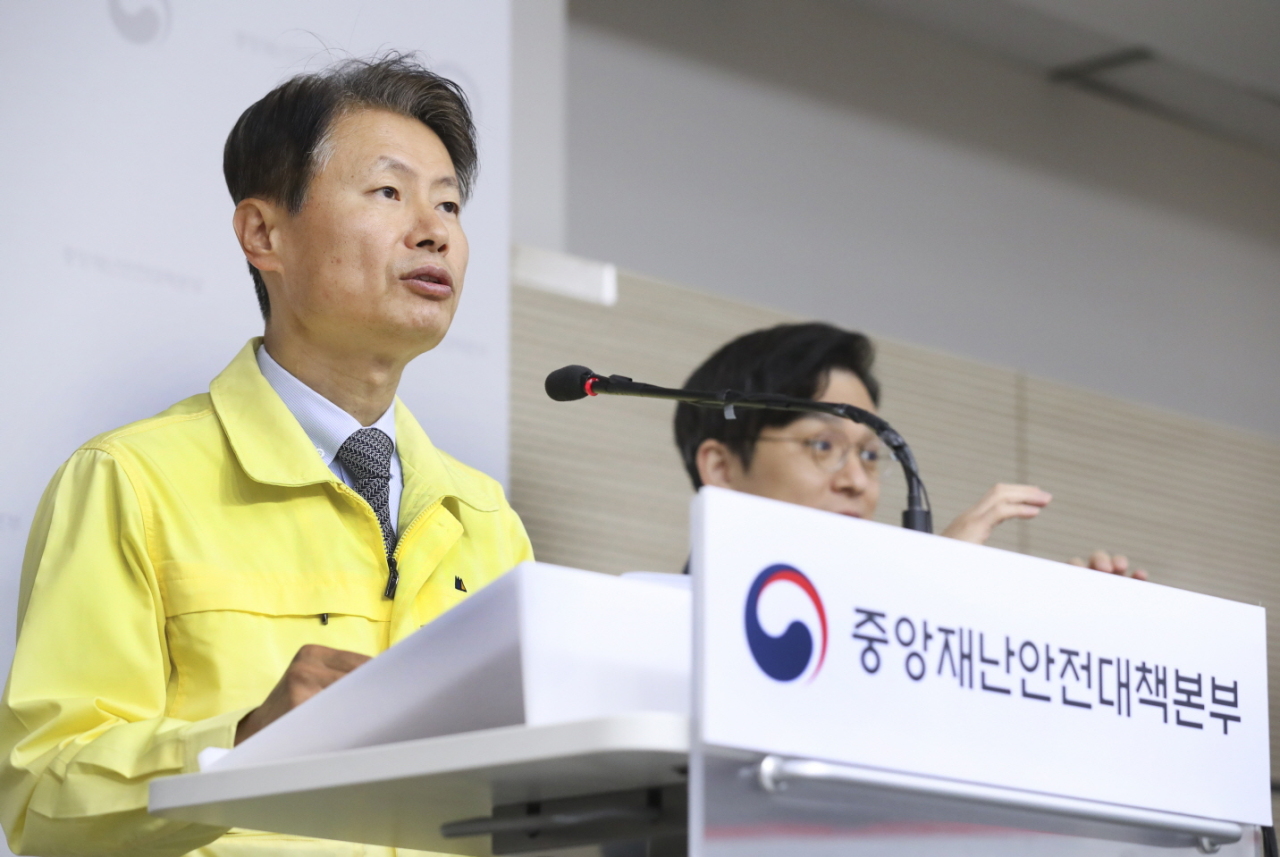Despite dip in cases, social distancing likely to continue
Changes brought forth by COVID-19 may prove irreversible, says PM
By Kim ArinPublished : April 13, 2020 - 10:22

South Korea recorded its 12th straight day with less than 100 new cases of the novel coronavirus, prompting hopes of a gradual return to status quo ante.
Twenty-five people were newly confirmed with COVID-19 on Monday, according to the Korea Centers for Disease Control and Prevention.
Korea’s cumulative cases totaled 10,537, of whom 7,447 -- 70.7 percent -- have recovered. Three more people died, putting the death toll at 217. Korea’s fatality rate now stands at over 2 percent.
Korea is in its fourth week of a rigorous social distancing, a noncompulsory campaign which ends April 19.
Social distancing has helped slow the spread, said Vice Minister of Health Kim Gang-lip. But this “success” did not mean COVID-19 would be gone anytime soon.
“Letting our guard down could lead us back to a resurgence,” he said, referring to a brief phase in February when the country saw single or even zero cases for about two weeks before a drastic spike in Daegu.
In a COVID-19 response meeting held Monday morning, Prime Minister Chung Sye-kyun said that the end of the “intense” social distancing period would not signal a return to a precoronavirus normal.
“The changes brought forth by the outbreak may prove irreversible,” he said, calling for a shift to a new strategy the government has called “routine distancing.”
“Routine distancing” -- which has been widely understood as a means of reduced social distancing -- is actually a partial resumption of economic activities while at the same time adhering to a degree of social distancing as needed, the prime minister explained.
A special committee comprising 18 government officials and experts for devising “routine distancing” guidelines will hold its meeting Thursday, with further details expected to be announced then.
Experts are wary of lifting controls and easing up on social distancing.
“Physical distancing is the most essential tool of defense against COVID-19 in the absence of cures and vaccines,” said infectious disease professor Lee Jae-gap of Hallym University Hospital in a video message posted Friday to Cheong Wa Dae’s social media accounts.
“Singapore has been far better than Korea in terms of containment, with the outbreak stabilizing significantly,” he said.
But when schools opened two weeks ago and people started heading back to work, it didn’t take 10 days before hundreds got infected there, he said. Singapore is now back in lockdown mode.
Infectious disease specialist Kim Woo-joo of Korea University Hospital in Guro, southern Seoul, said the health officials needed to present more specific guidelines on what “routine distancing” entails.
The term is ill-defined, he said, and “not an existing concept in epidemiology.”
Despite earlier projections that children may be allowed back at school by the end of April, lessons from Singapore have suggested that reopening schools could be risky, Education Ministry spokesperson Shin Mun-kyu said.
“If the coronavirus cases remain stable, the ministry may begin to review ways to initiate in-person classes,” he said.
Health officials remain on alert over infections coming from abroad.
About 5,000 people enter Korea each day on average now, 20 percent of them noncitizens, according to the KCDC, with imported cases now numbering 929.
All inbound passengers have been required to isolate for 14 days since April 1.
From Monday, everyone departing from the United States is tested within three days of arrival. Previously, testing was an option for those with symptoms. In the past two weeks, nearly half of international arrivals were from the US.
Visa waiver programs allowing travel to Korea without a visa are also suspended for 90 countries that are already banning entry to Koreans, starting Monday.
In addition, nonessential travelers will be asked to provide a medical certificate and go through a health interview before they are granted visas
KCDC Director Jung Eun-kyeong said the introduction of additional screening measures was expected to alleviate the administrative burden on officials.
“About 2,800 patients are still undergoing treatment in isolation. This translates to a tremendous amount of work for health care workers and officials,” she said, urging, yet again, people to stay home as much as possible.
By Kim Arin (arin@heraldcorp.com)




![[Herald Interview] 'Amid aging population, Korea to invite more young professionals from overseas'](http://res.heraldm.com/phpwas/restmb_idxmake.php?idx=644&simg=/content/image/2024/04/24/20240424050844_0.jpg&u=20240424200058)













![[KH Explains] Korean shipbuilding stocks rally: Real growth or bubble?](http://res.heraldm.com/phpwas/restmb_idxmake.php?idx=652&simg=/content/image/2024/04/25/20240425050656_0.jpg&u=)

